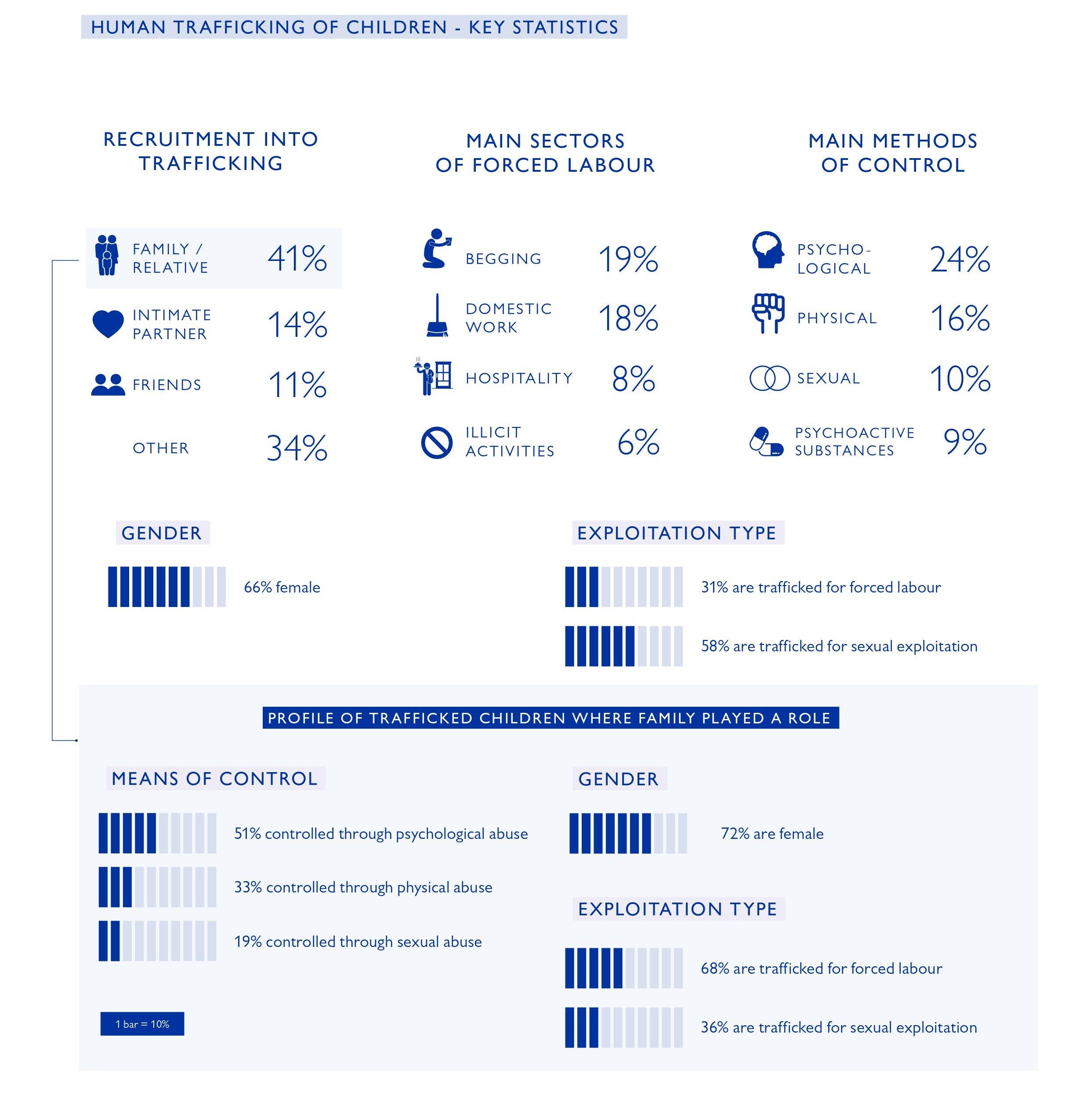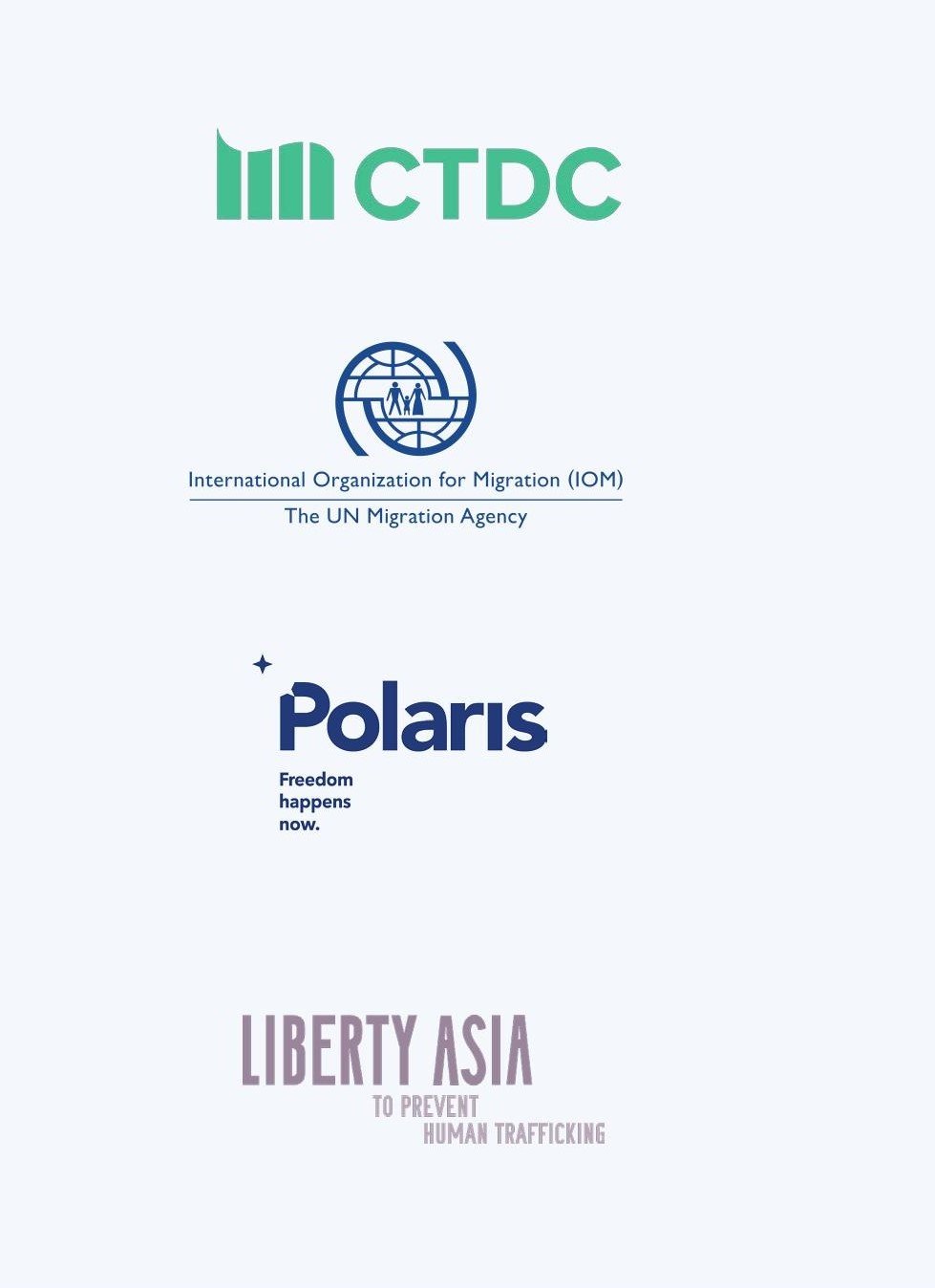Family Members are Involved in Nearly Half of All Child Trafficking Cases
New data from the world’s first data portal to include human trafficking data contributed by multiple agencies. The original article can be found here.
Almost half of identified cases of child trafficking begin with some family member involvement, according to newly released data from multiple organizations that have been analyzed together for the first time. These statistics are based through The Counter-Trafficking Data Collaborative (CTDC); the world’s first data portal to include human trafficking case data contributed by multiple agencies. The extent of family involvement in the trafficking of children is up to four times higher than in cases of adult trafficking, showing an urgent need for enhanced counter-trafficking efforts specifically targeting children and their families.
The extent of family involvement in the trafficking of children is more than four times greater than in cases of adult trafficking, where family members are involved in nine per cent of adult cases. The role of people who were considered friends by the victim is also important in the initial phases of trafficking for both children (11%) and adults (8%). Adults are most frequently recruited into situation of trafficking by an intimate partner, which is also common in cases of juvenile sex trafficking. Where recruitment into trafficking happens through an intimate partner, it is most likely for the purposes of sex trafficking.
Taken together, family members, friends, and intimate partners are involved in the initial stages of human trafficking for a third of adult trafficking cases and around 2/3 of child trafficking cases. A substantial portion of trafficking cases therefore involve persons who have intimacy, bonds of trust, and familial ties with the victim in the initial stages of trafficking. There is a spectrum of intent on the part of those involved. In some cases, family members, friends, or intimate partners are guilty of the crime of human trafficking because their intent from the start is to put children into positions of egregious exploitation; usually for some kind of material gain. In such cases, children may be sent away or exchanged for money, goods, or services.
At the other end of the spectrum, the decisions of family members, or even friends, or intimate partners, may be born out of heads of households and communities trying to make the best long-term plans for themselves and their loved ones in difficult circumstances. In such cases, families and communities may be unwittingly putting their children into risky situations and into the hands of human traffickers by trying to place them into work or education opportunities in different regions or abroad, for example. Human traffickers exploit the vulnerabilities of these families and their children for their own benefit.
There are further cases in the middle of the sphere where, for example, heads of household may make the decisions that do not fully take into account the best interests or the agency of the child but which were not intended to place the child in situations of egregious exploitation.
In order to access CTDC open data portal, please access this link: https://www.ctdatacollaborative.org/ These statistics related to child trafficking cases with family involvement are based on nearly 12,000 survivors of trafficking for which the information related to the recruitment process is known. This initiative is made possible by the generous support of the American people through the United States Department of State. The contents are the responsibility of IOM and do not necessarily reflect the views of the Department of State or the United States Government.



